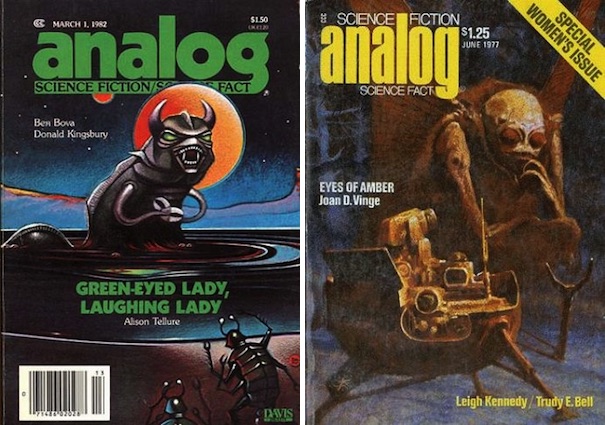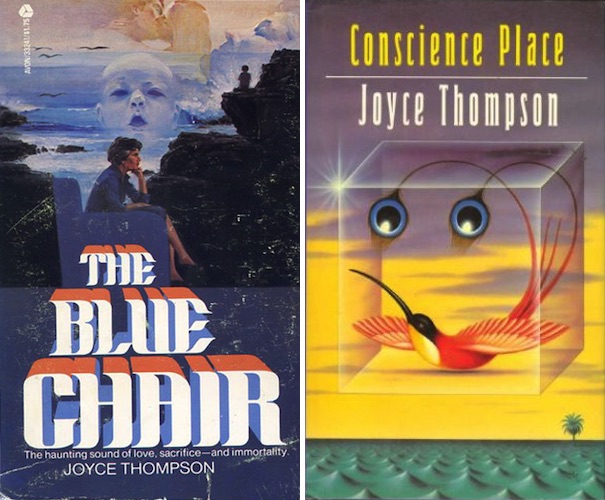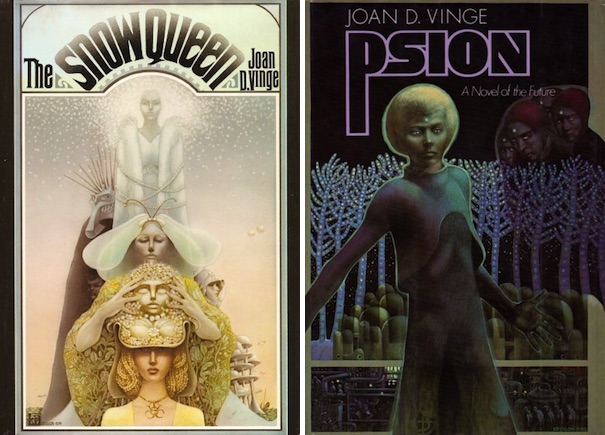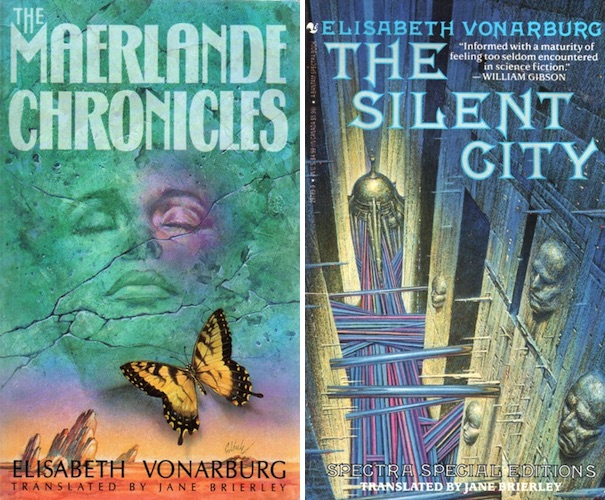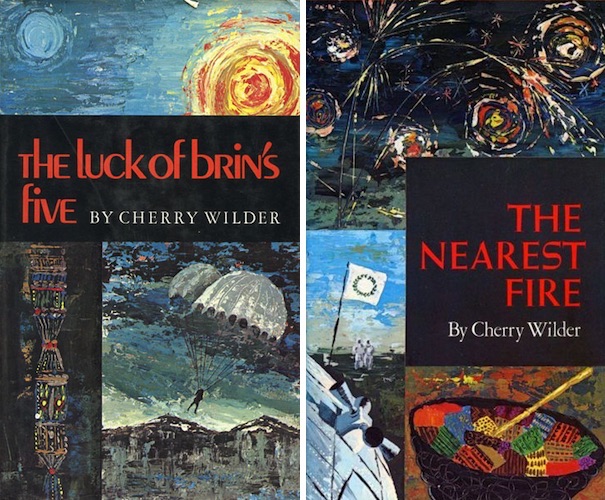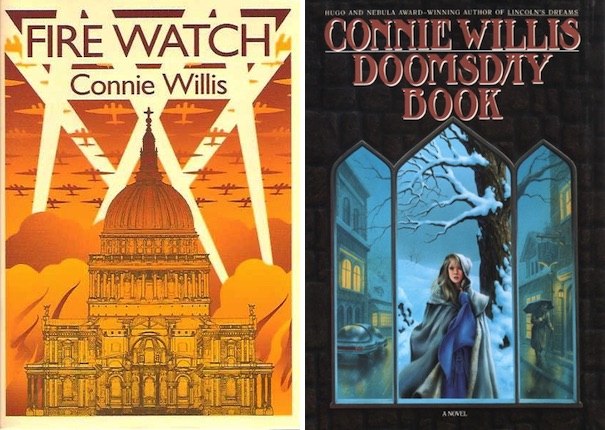Welcome to the final instalment of Women SF Writers of the 1970s! In this piece, we look at women who debuted in the 1970s whose surnames begin with T, U, V, W, X, Y and Z (which I pronounce Zed.) Also, there are no women who debuted in the 1970s whose surnames began with U or Z (of whom I am aware).
Previous instalments in this series cover women writers with last names beginning with A through F, those beginning with G, those beginning with H, those beginning with I & J, those beginning with K, those beginning with L, those beginning with M, those beginning with N, O, and P and those beginning with R and S.
Alison Tellure
Alison Tellure had a very small but very memorable body of work. “Lord of All it Surveys,” “Skysinger,” “Green-Eyed Lady, Laughing Lady,” and “Low Midnight” are all set on an alien world dominated by a single, vast, godlike creature. Existence there is complicated by the presence of competing, considerably tinier beings not entirely unlike humans. Contributors over on my blog, More Words, Deeper Hole, dug up biographical details from old Analog Biologs and con appearances, but the exchange raised more questions than it answered. As far as I know, Tellure never had a single author collection, but readers might be able to track down the June 1977 issue of Analog, which contains “Lord of All it Surveys.”
Joyce Thompson
Joyce Thompson was a children’s author. The sole work of hers’ that I have encountered is The Blue Chair, set in a world where unparalleled medical services, up to and including immortality, are available to the deserving. The protagonist is, alas, not one of the deserving; the state will not even deign to treat what seems like to be cancer. All she can do is consider the life she has lived. This story is not quite as bleak as it may sound.
Joan D. Vinge
Joan D. Vinge’s “Eyes of Amber” provided the cover story for the June 1977 Analog. Not surprising because by then she had established herself as an author to follow.
The easiest works of Vinge’s for Tor.com readers to track down are the four works in her grand space opera: The Snow Queen, World’s End, The Summer Queen, and Tangled Up in Blue. Three of the books feature the struggle of a backward world to survive being the sole known source of immortality. The other book, the odd one out, World’s End, involves a supporting character from The Snow Queen who tries to rescue his undeserving brothers.
Andre Norton fans may find much to enjoy in Vinge’s Cat series: Psion, Catspaw, and Dreamfall.
While Vinge is strongest at novella lengths, all three of her short story collections—Fireship, Eyes of Amber, and Phoenix in the Ashes—are long out of print and predate some of her most interesting pieces. The Complete Short Work of Joan D. Vinge would fit into one nice sized tome. Some publisher should make it happen.
Élisabeth Vonarburg
Élisabeth Vonarburg was born in France and is resident in Quebec; unsurprisingly the first language of her novels is French. A mainstay of Canadian (or depending on your politics, Quebecois) science fiction, her works have been translated for those of us who cannot read French. She is sufficiently prolific that picking a benchmark work is difficult, but readers new to Vonarburg might try the variously titled Philip K. Dick Award-winning Chroniques du Pays des Mères, AKA In the Mother’s Land, AKA The Maerland Chronicles, set in a world transformed by disaster, one-sided gender ratios, and social evolution.
Cherry Wilder
I’ve read only a few of Cherry Wilder’s works; the ones I did read were first-rate. I honestly don’t know why I have not read more of her work. Three possible explanations:
- Reasonable explanation: perhaps her books never reached Waterloo County.
- Embarrassing explanation: could it be that young me didn’t want to be seen reading a book by someone named Cherry?
- Stupid explanation: I am relegating this to the part of the essay I don’t think people read. (See the List of Shame, below)
Her Torin trilogy—The Luck of Brin’s Five, The Nearest Fire, and The Tapestry Warriors—features a human shipwrecked on an alien world. He is adopted by a local family and becomes entangled in local politics. Recommended.
Connie Willis
Connie Willis has enough Hugo and Nebula Awards that their aggregate mass has to be taken into account by geodetic satellites. I first noticed her “Daisy in the Sun” (Galileo, November 1979), which I followed up with the collection Fire Watch. Younger readers may be more familiar with her novels, such as The University of Oxford time-travel series, whose central message seems to be that Oxford has profound, intractable communications issues. In addition to the novelette “Fire Watch,” the sequence includes Doomsday Book, To Say Nothing of the Dog, or How We Found the Bishop’s Bird Stump at Last, Blackout, and All Clear. To Say Nothing of the Dog is a comedy. The others, not so much.
As I have not read every author first active in the 1970s, every single one of these reviews has been followed with a list of shame. This is the last list for the 70s. It is doubtless incomplete. If you have other authors to suggest, or wish to suggest a particular work by a particular author, please let me know.
Buy the Book
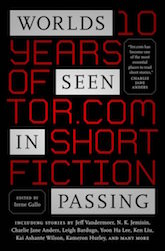

Worlds Seen in Passing: Ten Years of Tor.com Short Fiction
I appear to have overlooked a disproportionate number of women authors whose surnames began with T to Z. Could it be that because authors are shelved alphabetically, T through Z would tend to be on lower shelves and I simply never bothered to crouch down? This seems absurd but I have learned from seventeen years of running a game store that anything below knee level is invisible.
- S.L. Tannahill
- Barbara Talbot Taylor
- Jane Toombs
- Pamela Vincent
- Malvina G. Vogel
- Jenny Wagner
- Marjorie Warren
- B.F. Watkinson
- Lois June Wickstrom
- Mary Winter
- Jeanne Youngson
And that is that for women authors of the 1970s—which will no doubt come as a relief to the people who insisted I’d made my point and didn’t need to cover the whole alphabet. Time to start work on my next major series: Women Authors of the 1980s, A to Z.
(I wonder how long I can keep this up. If I live to a hundred, perhaps I will be penning surveys of women who first started publishing in the 2030s. If I am still capable of writing anything.)
In the words of Wikipedia editor TexasAndroid, prolific book reviewer and perennial Darwin Award nominee James Davis Nicoll is of “questionable notability.” His work has appeared in Publishers Weekly and Romantic Times as well as on his own websites, James Nicoll Reviews and Young People Read Old SFF (where he is assisted by editor Karen Lofstrom and web person Adrienne L. Travis). He is surprisingly flammable.











